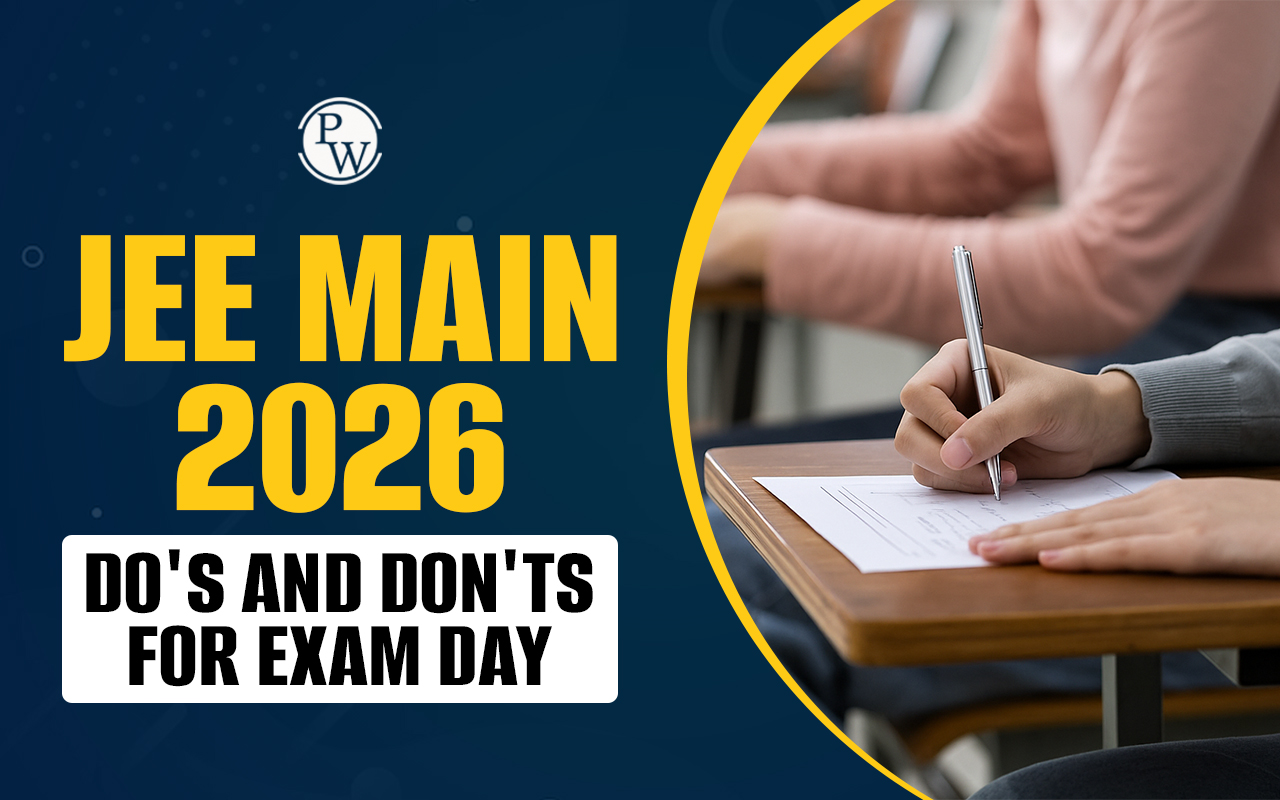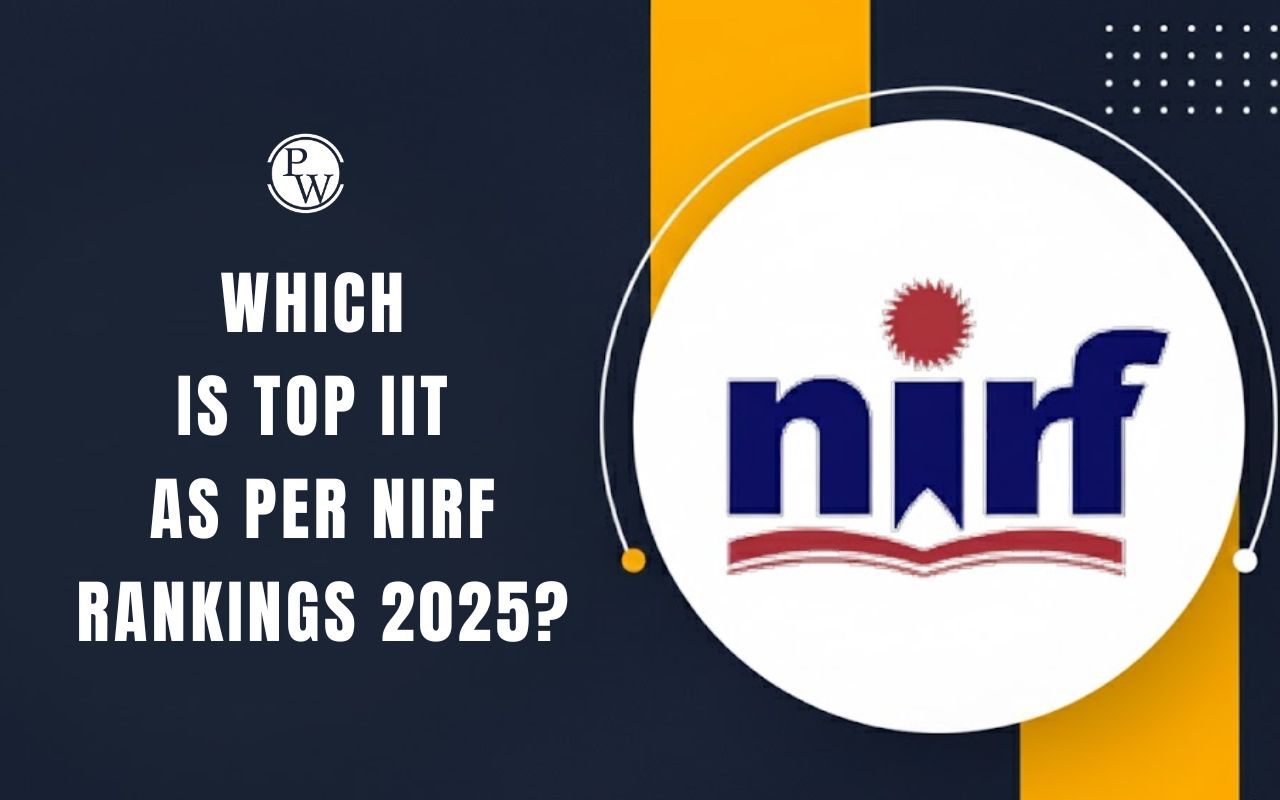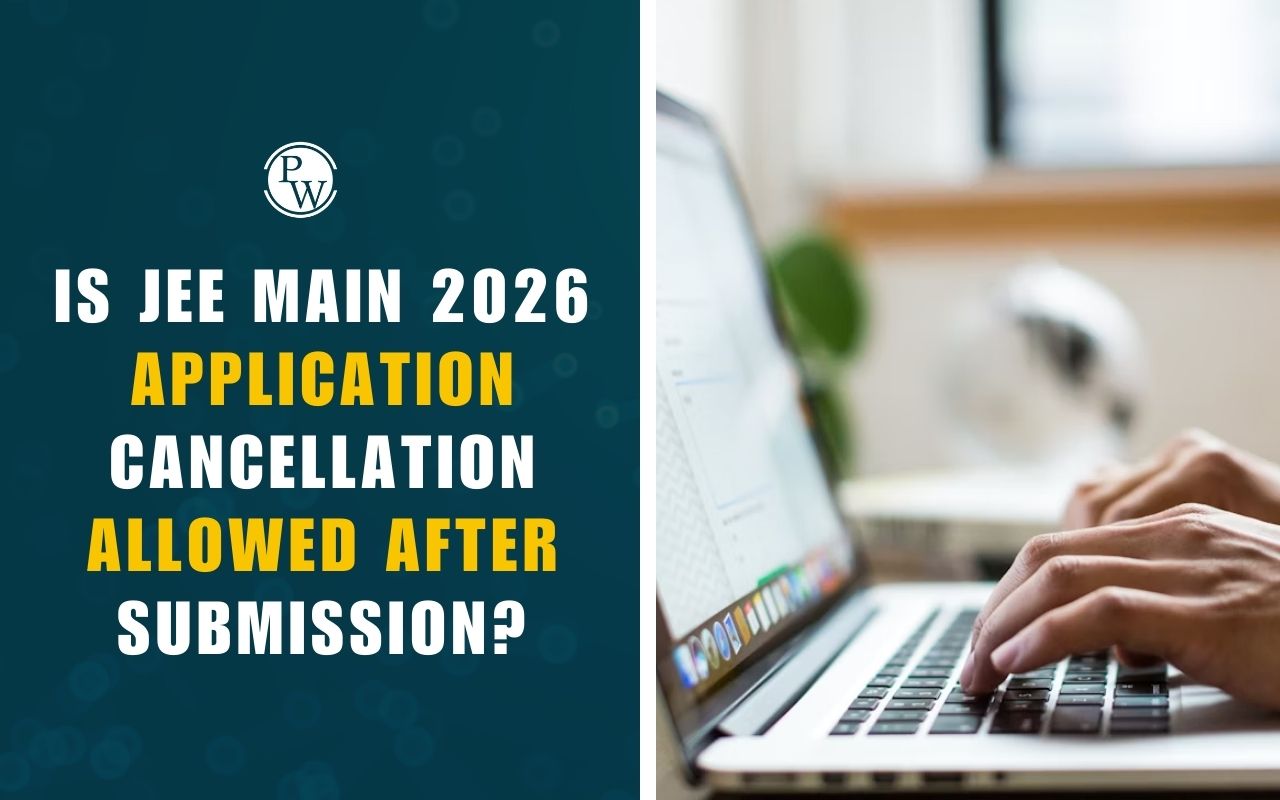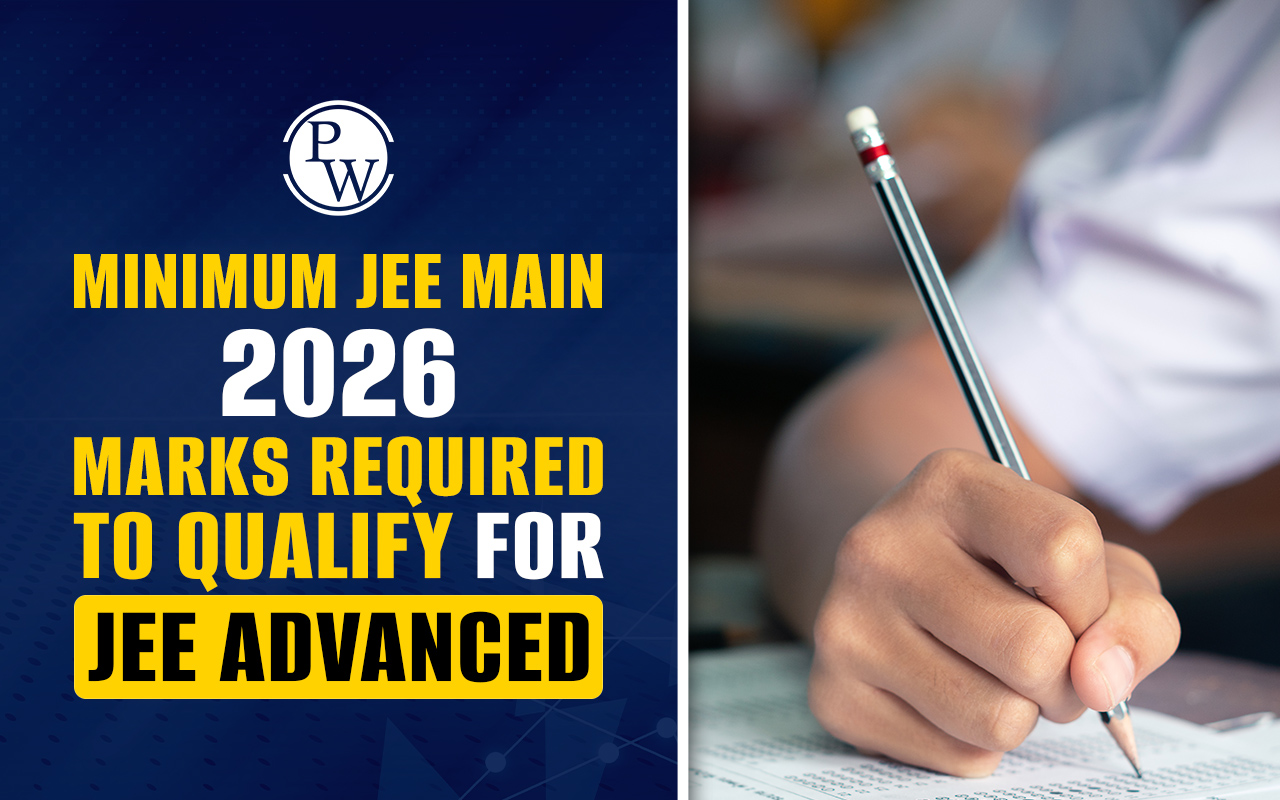
JEE Main Physical Chemistry Syllabus 2025 : JEE Main Syllabus 2025 for Chemistry is divided into three parts i.e., Physical Chemistry, Organic Chemistry, and Inorganic Chemistry. Candidates have to study all the parts to get a good score in JEE Main 2025 exam . JEE Main Physical Chemistry Syllabus 2025 includes topics such as Atomic Structure, Chemical Bonding and Molecular Structure, Solutions, Equilibrium, Chemical Thermodynamics, Chemical Kinetics, Redox Reactions and Electrochemistry, etc. Candidates can check the topic-wise detailed JEE Main Physical Chemistry Syllabus 2025 in this article below.
JEE Main Physical Chemistry Syllabus 2025
There are 9 units in JEE Main Physical Chemistry Syllabus 2025. Candidates can check the unit-wise topics included in the table below| JEE Main Physical Chemistry Syllabus 2025 | ||
| S.No. | Units | Topics |
| 1 | Some Basic Concepts in Chemistry | Matter and its nature, Dalton's atomic theory: Concept of atom, molecule, element and compound: Physical quantities and their measurements in Chemistry, precision and accuracy, significant figures. S.I.Units, dimensional analysis: Laws of chemical combination; Atomic and molecular masses, mole concept, molar mass, percentage composition, empirical and molecular formulae: Chemical equations and stoichiometry. |
| 3 | Atomic Structure | Thomson and Rutherford atomic models and their limitations; Nature of electromagnetic radiation, photoelectric effect; Spectrum of the hydrogen atom. Bohr model of a hydrogen atom - its postulates, derivation of the relations for the energy of the electron and radii of the different orbits, limitations of Bohr's model; Dual nature of matter, de Broglie's relationship. Heisenberg uncertainty principle. Elementary ideas of quantum mechanics, quantum mechanics, the quantum mechanical model of the atom, its important features. Concept of atomic orbitals as one-electron wave functions: Variation of and 2 with r for 1s and 2s orbitals; various quantum numbers (principal, angular momentum and magnetic quantum numbers) and their significance; shapes of s, p and d - orbitals, electron spin and spin quantum number: Rules for filling electrons in orbitals – Aufbau principle. Pauli's exclusion principle and Hund's rule, electronic configuration of elements, extra stability of half-filled and completely filled orbitals. |
| 4 | Chemical Bonding and Molecular Structure | Kossel - Lewis approach to chemical bond formation, the concept of ionic and covalent bonds. Ionic Bonding: Formation of ionic bonds, factors affecting the formation of ionic bonds; calculation of lattice enthalpy. Covalent Bonding: Concept of electronegativity. Fajan’s rule, dipole moment: Valence Shell Electron Pair Repulsion (VSEPR ) theory and shapes of simple molecules. Quantum mechanical approach to covalent bonding: Valence bond theory - its important features, the concept of hybridization involving s, p and d orbitals; Resonance. Molecular Orbital Theory: Its important features. LCAOs, types of molecular orbitals (bonding, antibonding), sigma and pi-bonds, molecular orbital electronic configurations of homonuclear diatomic molecules, the concept of bond order, bond length and bond energy. Elementary idea of metallic bonding. Hydrogen bonding and its applications. |
| 5 | Chemical Thermodynamics | Fundamentals of thermodynamics: System and surroundings, extensive and intensive properties, state functions, types of processes. The first law of thermodynamics : Concept of work, heat internal energy and enthalpy, heat capacity, molar heat capacity; Hess’s law of constant heat summation; Enthalpies of bond dissociation, combustion, formation, atomization, sublimation, phase transition, hydration, ionization and solution. The second law of thermodynamics: Spontaneity of processes; S of the universe and G of the system as criteria for spontaneity. G (Standard Gibbs energy change) and equilibrium constant. |
| 6 | Solutions | Different methods for expressing the concentration of solution - molality, molarity, mole fraction, percentage (by volume and mass both), the vapour pressure of solutions and Raoult's Law - Ideal and non-ideal solutions, vapour pressure - composition, plots for ideal and non-ideal solutions; Colligative properties of dilute solutions - a relative lowering of vapour pressure, depression of freezing point, the elevation of boiling point and osmotic pressure; Determination of molecular mass using colligative properties; Abnormal value of molar mass, van’t Hoff factor and its significance. |
| 7 | Equilibrium | Meaning of equilibrium, the concept of dynamic equilibrium. Equilibria involving physical processes: Solid-liquid, liquid - gas and solid-gas equilibria, Henry's law. General characteristics of equilibrium involving physical processes. Equilibrium involving chemical processes: Law of chemical equilibrium, equilibrium constants (Kp and Kc) and their significance, the significance of G and G in chemical equilibrium, factors affecting equilibrium concentration, pressure, temperature, the effect of catalyst; Le Chatelier’s principle. Ionic equilibrium: Weak and strong electrolytes, ionization of electrolytes, various concepts of acids and bases (Arrhenius. Bronsted - Lowry and Lewis) and their ionization, acid-base equilibria (including multistage ionization) and ionization constants, ionization of water. pH scale, common ion effect, hydrolysis of salts and pH of their solutions, the solubility of sparingly soluble salts and solubility products, buffer solutions |
| 8 | Redox Reactions and Electrochemistry | Electronic concepts of oxidation and reduction, redox reactions, oxidation number, rules for assigning oxidation number, balancing of redox reactions. Electrolytic and metallic conduction, conductance in electrolytic solutions, molar conductivities and their variation with concentration: Kohlrausch’s law and its applications. Electrochemical cells - Electrolytic and Galvanic cells, different types of electrodes, electrode potentials including standard electrode potential, half - cell and cell reactions, emf of a Galvanic cell and its measurement: Nernst equation and its applications; Relationship between cell potential and Gibbs' energy change: Dry cell and lead accumulator; Fuel cells. |
| 9 | Chemical Kinetics | Rate of a chemical reaction, factors affecting the rate of reactions: concentration, temperature, pressure and catalyst; elementary and complex reactions, order and molecularity of reactions, rate law, rate constant and its units, differential and integral forms of zero and first-order reactions, their characteristics and half-lives, the effect of temperature on the rate of reactions, Arrhenius theory, activation energy and its calculation, collision theory of bimolecular gaseous reactions (no derivation). |
JEE Main Exam Pattern 2025
Candidates can check the paper 1 exam pattern for JEE Main 2025 exam in the table below. The total time allotted to solve JEE Main 2025 paper is 3 hours and the total number of questions asked in JEE Main is 90. Candidates can choose any of the 13 languages to appear in JEE Main 2025 exam.| Particulars | BTech/BE |
| Exam mode | Online (Computer based) |
| Number of sections and subjects | 3 (Physics, Chemistry, and Mathematics) |
| Duration of exam | 3 hours (180 minutes) 4 hours for PwD candidates |
| Type of questions | MCQs: 4 options with only 1 correct option Numerical Value Questions: Questions whose answers are to be filled in as a numerical value |
| Section A (MCQ) | Mathematics: 20 Physics: 20 Chemistry: 20 |
| Section B (Numerical Value) | Mathematics: 10 Physics: 10 Chemistry: 10 In Section B, candidates have to attempt any five questions out of 10 from each section. |
| How many questions in JEE Mains | 90 |
| JEE Mains Total Marks | 300 marks |
| Language of paper | Assamese, Bengali, Kannada, Malayalam, Marathi, Odia, Punjabi, Tamil, Telugu, Urdu in addition to Hindi, English, and Gujarati |
Study Material For JEE 2025 Preparation
Physics Wallah offers comprehensive study material for JEE 2025 Preparation , i ncluding well-structured video lectures, detailed notes, practice questions, and test series. The material covers all JEE Main Syllabus topics, ensuring a strong conceptual understanding and effective problem-solving skills.JEE Main Physical Chemistry Syllabus 2025 FAQs
Q.1 : Is the 2025 JEE Mains syllabus released?
Ans. Yes, NTA has released JEE Main 2025 Syllabus with some new updates and revisions at the official website of NTA.
Q.2 : Is surface chemistry removed from JEE 2025?
Ans. Yes, Surface Chemistry, States of Matter, General Principles and Processes of Isolation of Metals, S-block elements, Hydrogen, Environmental Chemistry, Alcohol Phenol, Ether, and Polymers chapters are removed from JEE Main Syllabus 2025.
Q.3: How many questions can be asked from JEE Main Physical Chemistry Syllabus 2025?
Ans. Candidates can expect 5-6 questions from JEE Main Physical Chemistry Syllabus 2025.
Q.4: What are the topics included in JEE Main Physical Chemistry Syllabus 2025?
Ans. JEE Main Physical Chemistry Syllabus 2025 includes topics such as Atomic Structure, Chemical Bonding and Molecular Structure, Solutions, Equilibrium, Chemical Thermodynamics, Chemical Kinetics, Redox Reactions and Electrochemistry, etc.
Q.5 : What is the duration of JEE Main 2025 exam?
Ans. The duration of JEE Main 2025 exam is 3 hours. Candidates from PwD category will get 4 hours to solve JEE Main 2025 paper.
Talk to a counsellorHave doubts? Our support team will be happy to assist you!

Check out these Related Articles
Free Learning Resources
PW Books
Notes (Class 10-12)
PW Study Materials
Notes (Class 6-9)
Ncert Solutions
Govt Exams
Class 6th to 12th Online Courses
Govt Job Exams Courses
UPSC Coaching
Defence Exam Coaching
Gate Exam Coaching
Other Exams
Know about Physics Wallah
Physics Wallah is an Indian edtech platform that provides accessible & comprehensive learning experiences to students from Class 6th to postgraduate level. We also provide extensive NCERT solutions, sample paper, NEET, JEE Mains, BITSAT previous year papers & more such resources to students. Physics Wallah also caters to over 3.5 million registered students and over 78 lakh+ Youtube subscribers with 4.8 rating on its app.
We Stand Out because
We provide students with intensive courses with India’s qualified & experienced faculties & mentors. PW strives to make the learning experience comprehensive and accessible for students of all sections of society. We believe in empowering every single student who couldn't dream of a good career in engineering and medical field earlier.
Our Key Focus Areas
Physics Wallah's main focus is to make the learning experience as economical as possible for all students. With our affordable courses like Lakshya, Udaan and Arjuna and many others, we have been able to provide a platform for lakhs of aspirants. From providing Chemistry, Maths, Physics formula to giving e-books of eminent authors like RD Sharma, RS Aggarwal and Lakhmir Singh, PW focuses on every single student's need for preparation.
What Makes Us Different
Physics Wallah strives to develop a comprehensive pedagogical structure for students, where they get a state-of-the-art learning experience with study material and resources. Apart from catering students preparing for JEE Mains and NEET, PW also provides study material for each state board like Uttar Pradesh, Bihar, and others
Copyright © 2025 Physicswallah Limited All rights reserved.
Get App









